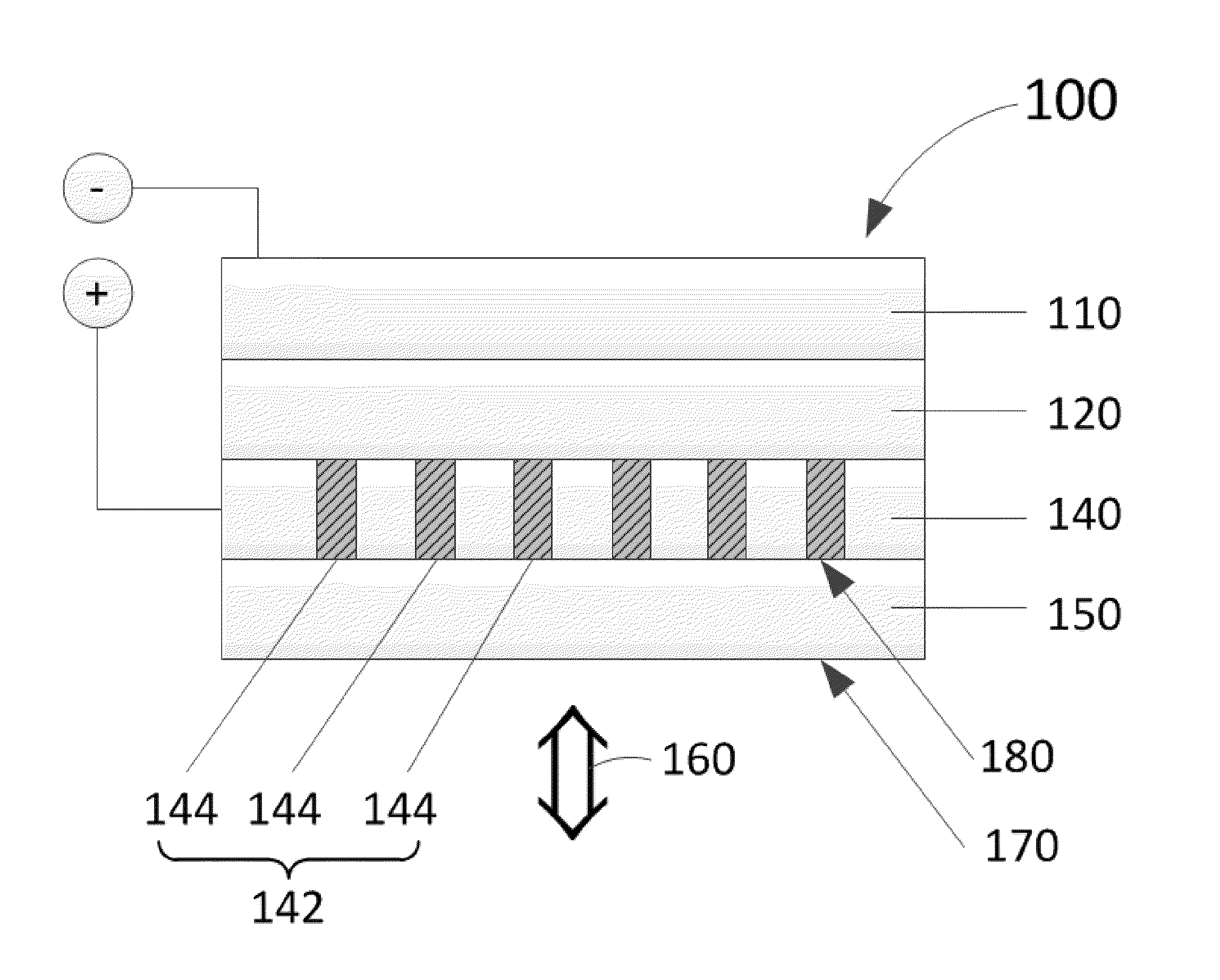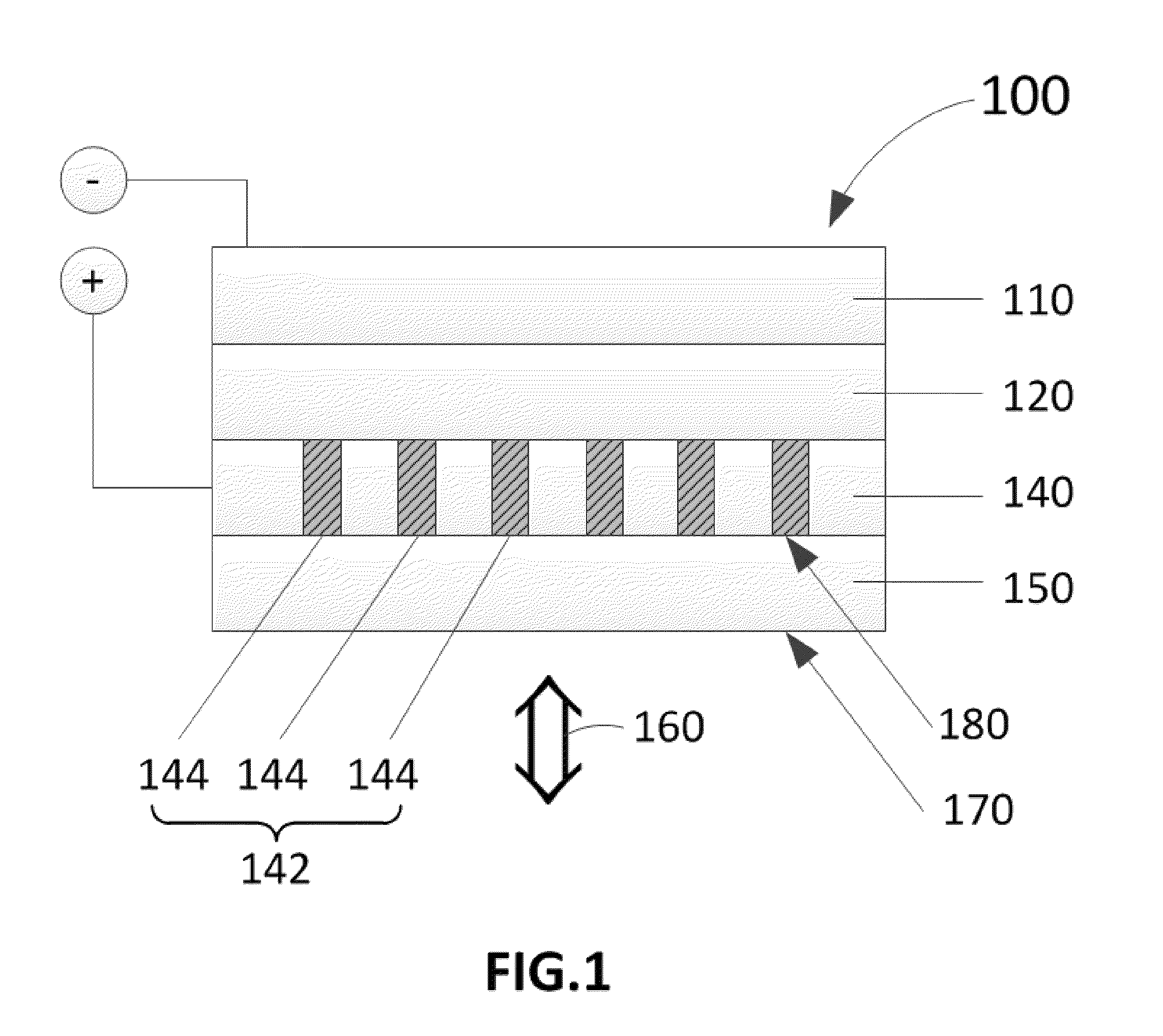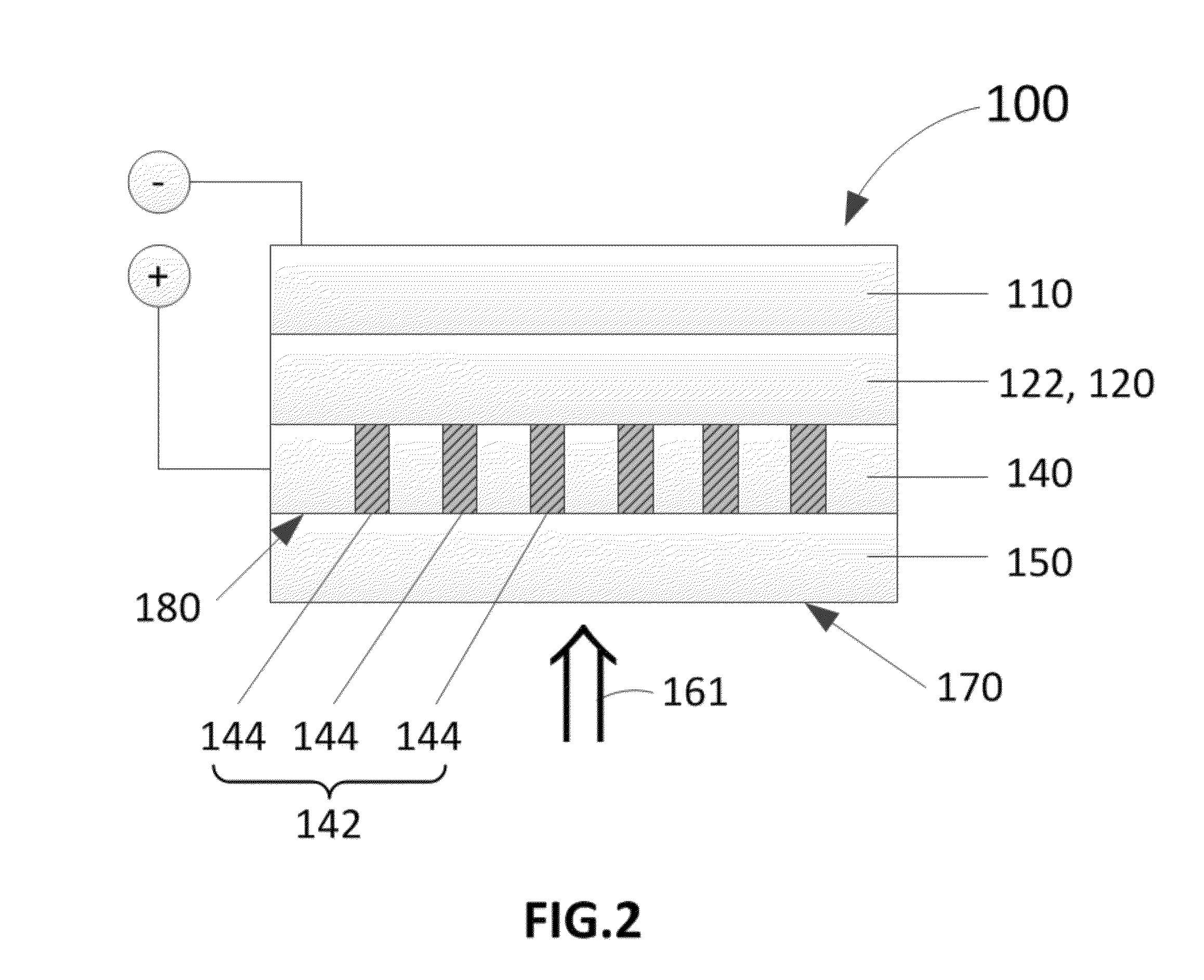Organic optoelectronic devices with surface plasmon structures and methods of manufacture
a technology of organic optoelectronic devices and surface plasmons, which is applied in the direction of thermoelectric devices, sustainable manufacturing/processing, and final product manufacturing, etc., can solve the problems of ood being a major cause of device degradation, reliance on indium tin oxide (“ito”) remains a key limiting factor in the design and performance of opvs and other organic optoelectronic devices, and ood is a major
- Summary
- Abstract
- Description
- Claims
- Application Information
AI Technical Summary
Benefits of technology
Problems solved by technology
Method used
Image
Examples
Embodiment Construction
[0038]In one embodiment of the present invention, an ordered or periodic array of sub-wavelength nanostructures is optimally formed in a metal layer, such as an exemplary metallic foil or film, for use as an anode in an organic optoelectronic device (“OOD”), such as in an organic photovoltaic device (“OPV”) or an organic light emitting diode device (“OLED”), for example. The metal anode layer comprising one or more nanostructures may be desirably adapted for use in an OOD as a replacement or alternative to a conventional high work function, optically-transmissive front electrode, which is typically made of indium tin oxide (“ITO”). As compared to conventional ITO-OODs, the ITO-free OOD configuration of the present invention leverages the relatively higher conductivity of metal as the anode materials (e.g. silver (Ag), gold (Au), and copper (Cu)), and the Surface Plasmonic (“SP”) and Extraordinary Optical Transmission (“EOT”) properties observed in the perforated metal anode electrod...
PUM
 Login to View More
Login to View More Abstract
Description
Claims
Application Information
 Login to View More
Login to View More - R&D
- Intellectual Property
- Life Sciences
- Materials
- Tech Scout
- Unparalleled Data Quality
- Higher Quality Content
- 60% Fewer Hallucinations
Browse by: Latest US Patents, China's latest patents, Technical Efficacy Thesaurus, Application Domain, Technology Topic, Popular Technical Reports.
© 2025 PatSnap. All rights reserved.Legal|Privacy policy|Modern Slavery Act Transparency Statement|Sitemap|About US| Contact US: help@patsnap.com



